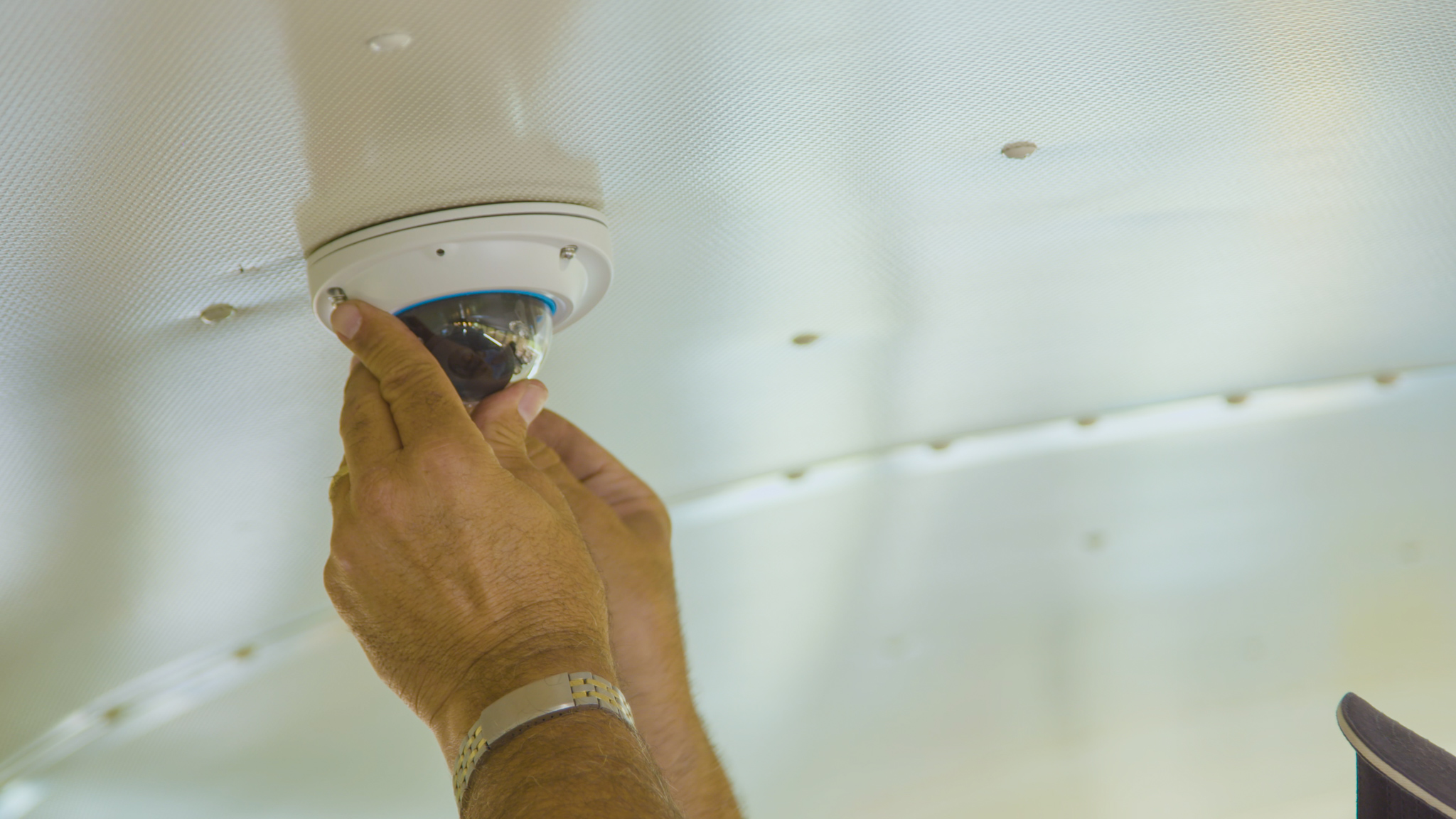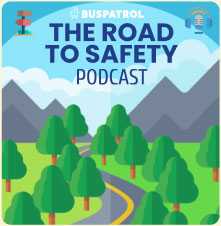Key takeaways:
- Stop-arm enforcement programs use technology to catch and deter drivers who illegally pass stopped school buses.
- Every year, tens of millions of stop-arm violations put students in danger during the most vulnerable moments of their school day.
- BusPatrol’s AI-powered solution requires no upfront costs for schools and has been proven to reduce violations and change driver behavior.
Every school day, millions of children rely on school buses to get to and from school safely. But not all drivers follow the rules, and many fail to stop when buses are picking up or dropping off students. These violations pose a serious public safety risk.
This article explains what a stop-arm enforcement program is, why it matters for school bus safety, and how technology is helping communities protect students.
Let’s dive in.
What Is a Stop-Arm Enforcement Program?
A school bus stop-arm is the mechanical arm that extends from a school bus when it stops to pick up or drop off students. Along with flashing red lights, it signals that vehicles in both directions must come to a complete stop. Unfortunately, many drivers ignore this signal.
A stop-arm enforcement program is designed to address this issue. It uses camera systems installed on school buses to detect and record vehicles that illegally pass while the stop-arm is deployed. Before a citation is issued, the potential violation is reviewed and approved by law enforcement or another authorized official. If the violation is validated, a ticket is then mailed to the registered owner of the vehicle.
While automated enforcement laws vary state by state, many now allow or encourage the use of school bus camera programs. These systems fill a critical gap because police cannot be at every stop, and most illegal passings happen without any consequences. Automated enforcement helps ensure drivers are held accountable, even when officers are not on the scene.
Why It Matters: Protecting Students from Preventable Tragedies
Passing school buses is not a victimless crime. Every time a driver ignores a school bus’s extended stop-arm, they put a child’s life at risk.
In 2022, a 16-year-old girl in Pennsylvania was crossing the street to board her school bus when an oncoming vehicle struck her, despite the bus’s flashing lights and deployed stop-arm. Just a few months later in Wisconsin, a 13-year-old girl was killed by a driver who attempted to pass a stopped school bus. The car sideswiped the bus and hit the student as she waited to board. And just last year, a nine-year-old student in Florida was hit by a vehicle while trying to get on her school bus. The impact threw her 50 feet, leaving her with life-altering injuries.
These tragedies are devastating, but they are far from isolated. Every school day, illegal school bus passings happen in communities across the country, often without consequence. According to the National Association of State Directors of Pupil Transportation Services, there were an estimated 45.2 million illegal stop-arm violations in 2024. That’s an increase from 43.5 million in the previous school year and reflects a troubling trend.
The actual number may be even higher. Research from the Pennsylvania Department of Transportation suggests that many violations go unreported, meaning the scope of the issue is likely undercounted.
Even one injury or fatality is one too many. But when tens of millions of violations occur each year, the need for change becomes urgent. The stakes aren’t limited to physical harm — close calls can leave lasting emotional scars, and preventing that kind of childhood trauma is just as important. That’s where automated enforcement comes in.
What’s the Difference? Traditional Enforcement vs. Automated Enforcement
For decades, school bus safety relied almost entirely on human observation. Bus drivers, while trained to report dangerous behavior, are rightfully focused on ensuring students get on and off the bus safely. Expecting them to also identify license plates, note vehicle makes and models, and accurately recall incidents in real time is unrealistic — especially in high-stress moments when a child’s safety is on the line.
Law enforcement officers, too, play a critical role in school traffic safety. But with thousands of bus stops in a single district and limited resources, it is simply not possible to have officers stationed at every location. As a result, most drivers who illegally pass a stopped school bus are never caught. This lack of accountability has allowed the problem to grow unchecked.
Automated enforcement does not replace the role of law enforcement — it strengthens it. School bus camera systems provide clear, objective video evidence that supports citation processing and legal review. These systems operate consistently, capturing violations regardless of weather, lighting, or time of day. When a vehicle passes a bus with its stop-arm extended, the violation is automatically recorded and reviewed, helping ensure that enforcement is both fair and accurate.
By giving communities a way to document and act on dangerous driving behavior, automated enforcement closes a critical gap in traditional safety efforts. It allows law enforcement to do more with the resources they already have and gives schools the tools to protect students more effectively, without taking time or focus away from drivers and educators.
The BusPatrol Difference: What Makes Us the Leader in School Bus Safety
Not all automated enforcement companies are built the same. BusPatrol is the most trusted and widely deployed stop-arm enforcement program in the United States. We work closely with school districts, municipalities, and law enforcement to deliver comprehensive safety programs that do more than record violations. Our goal is to change driver behavior, reduce risk, and make a lasting difference in every community we serve.
Here’s what sets us apart:
Full Fleet Coverage = Every Student Protected
BusPatrol is the only automated traffic enforcement company that offers full-fleet deployment through a violator-funded program. Every school bus in a district is equipped with stop-arm safety technology, not just a select few.
Many other providers limit coverage to routes they consider high risk, often leaving certain neighborhoods without protection. BusPatrol takes a different approach. We believe every student deserves the same level of safety, no matter where they live or which route they ride. By delivering consistent, district-wide coverage, we help create safer roads for all and support long-term behavior change across entire communities.
Powered By Real AI
When we say not all automated enforcement programs are built the same, we mean it. At the center of BusPatrol’s platform is AVA, our proprietary AI engine built specifically to detect illegal school bus passings with greater accuracy and reliability.
Unlike many systems that rely on basic sensors, radar, or preset triggers, AVA uses true artificial intelligence to assess live traffic conditions and identify violations in real time. It can detect illegal passings from up to eight lanes away, while most competitors top out at three. AVA is constantly learning and improving, which means fewer false positives and more consistent enforcement.
End-to-End Management
With BusPatrol, school districts don’t need to juggle multiple vendors or take on new responsibilities. We manage every part of the program from start to finish, including equipment installation, maintenance, evidence review, and citation processing.
Our turnkey model is designed to reduce the administrative burden on schools and municipalities. Everything runs through our secure, cloud-based platform, making it easy for partners to track progress, access data, and stay focused on student safety — not paperwork.

No Upfront Costs
School safety shouldn’t depend on funding availability. That’s why BusPatrol programs require no upfront investment from districts or taxpayers.
Our violator-funded model makes it possible to deploy advanced safety technology across entire fleets without adding financial pressure. Communities get the tools they need to protect students, while BusPatrol recovers costs over time through a portion of citation revenue.
Education Comes First
Changing driver behavior starts with public awareness. Before any citations are issued, BusPatrol leads a comprehensive education campaign to inform the community and build support for the program.
This includes a public service announcement (PSA) campaign that helps spread the word through local media, social channels, and school communications. We also provide a warning citation period, multilingual resources for families, classroom materials for students, and communications toolkits for schools.
Everything is tailored to the local community to ensure that drivers, parents, and residents know what to expect, understand the law, and have time to adjust before enforcement begins.
Transparent, Measurable Results
BusPatrol’s program delivers results that go beyond citations. Communities that adopt our technology see real, lasting changes in driver behavior.
Since 2017, over 90 percent of drivers who receive one stop-arm violation never commit the offense again. In some districts, that number rises as high as 98 percent. On average, communities see a 30 percent reduction in violations year over year.
The upward trend in illegal school bus passings can be reversed—and BusPatrol is helping districts across the country do exactly that.
Building Safer Communities, One Stop at a Time
Illegal school bus passings put children at risk every single day. The threat is real, but so is the solution.
BusPatrol helps communities protect students, change driver behavior, and create safer roads — without adding costs to school budgets. Want to bring stop-arm enforcement to your district? Contact us to get started.


